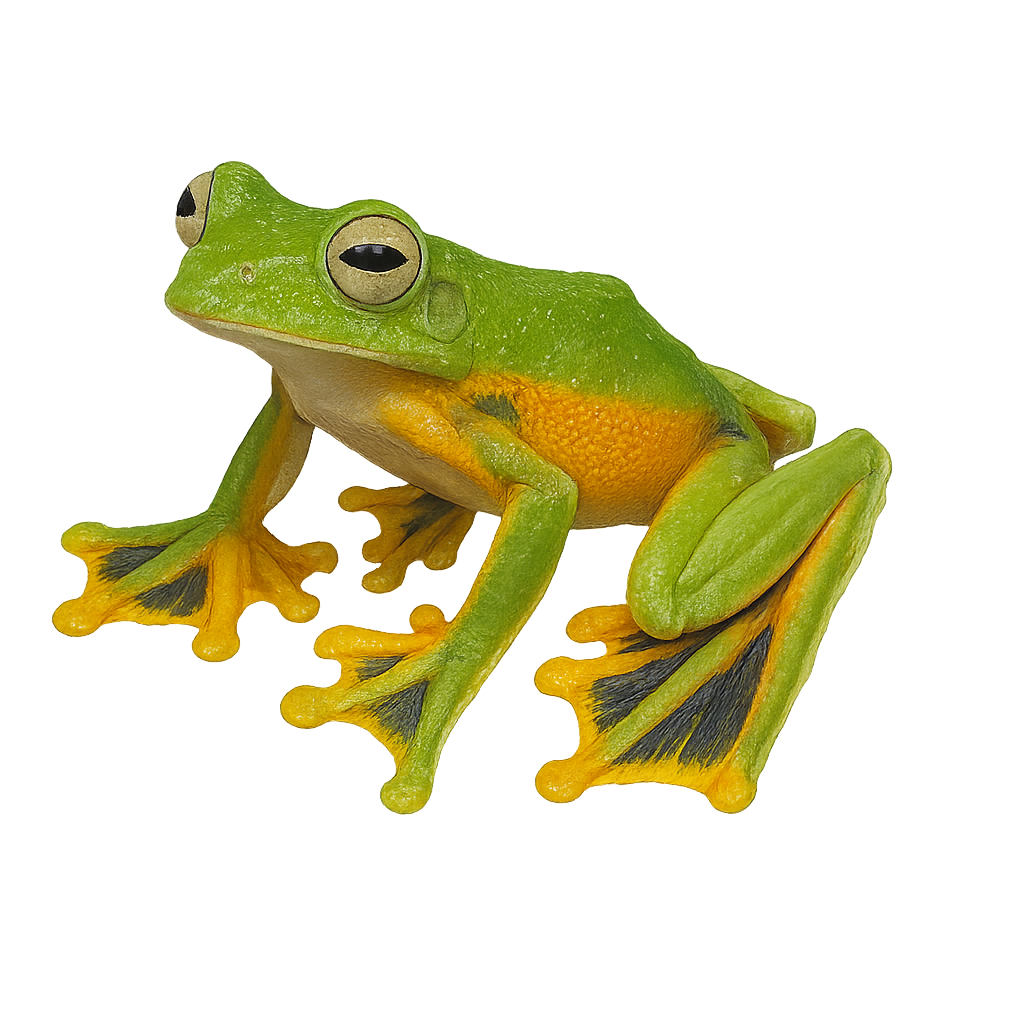Your wildlife photography guide.
Explore the wallace's flying frog in detail, study its behavior, prepare your shots.
Where to observe and photograph the wallace's flying frog in the wild
Learn where and when to spot the wallace's flying frog in the wild, how to identify the species based on distinctive features, and what natural environments it inhabits. The WildlifePhotographer app offers tailored photography tips that reflect the wallace's flying frog’s behavior, helping you capture better wildlife images. Explore the full species profile for key information including description, habitat, active periods, and approach techniques.
Wallace's flying frog
Scientific name: Rhacophorus nigropalmatus

IUCN Status: Least Concern
Family: RHACOPHORIDAE
Group: Amphibians
Sensitivity to human approach: Somewhat shy
Minimum approach distance: 5 m
Reproduction period: March to October
Incubation: 25-30 jours
Births: March to October
Habitat:
Humid tropical forests, trees, marshy areas
Activity period :
Mainly active at night, generally discreet during the day.
Identification and description:
Wallace's Flying Frog is a remarkable amphibian species, famous for its ability to glide from tree to tree. This frog, with long and flexible limbs, has wide feet with membranes that allow it to stabilize itself in flight. It primarily lives in the humid tropical forests of Malaysia, Indonesia, and Borneo. It feeds on insects while suspended in the branches of trees. During the breeding season, it moves to ponds or streams to lay its eggs. Wallace's Flying Frog is also nocturnal and uses its flight to escape predators.
Recommended lens:
Macro – adjust based on distance, desired framing (portrait or habitat), and approach conditions.
Photography tips:
Photograph Wallace's Flying Frog using soft, discreet lighting, preferably at night, to capture its vivid colors and flying abilities. Use a macro lens to capture the details of its membranous feet and eyes. Be patient and try to photograph the animal in flight when the opportunity arises, or during its interactions with its natural environment.
The WildlifePhotographer App is coming soon!
Be the first to explore the best nature spots, track rutting seasons, log your observations, and observe more wildlife.
Already 1 430 wildlife lovers subscribed worldwide

